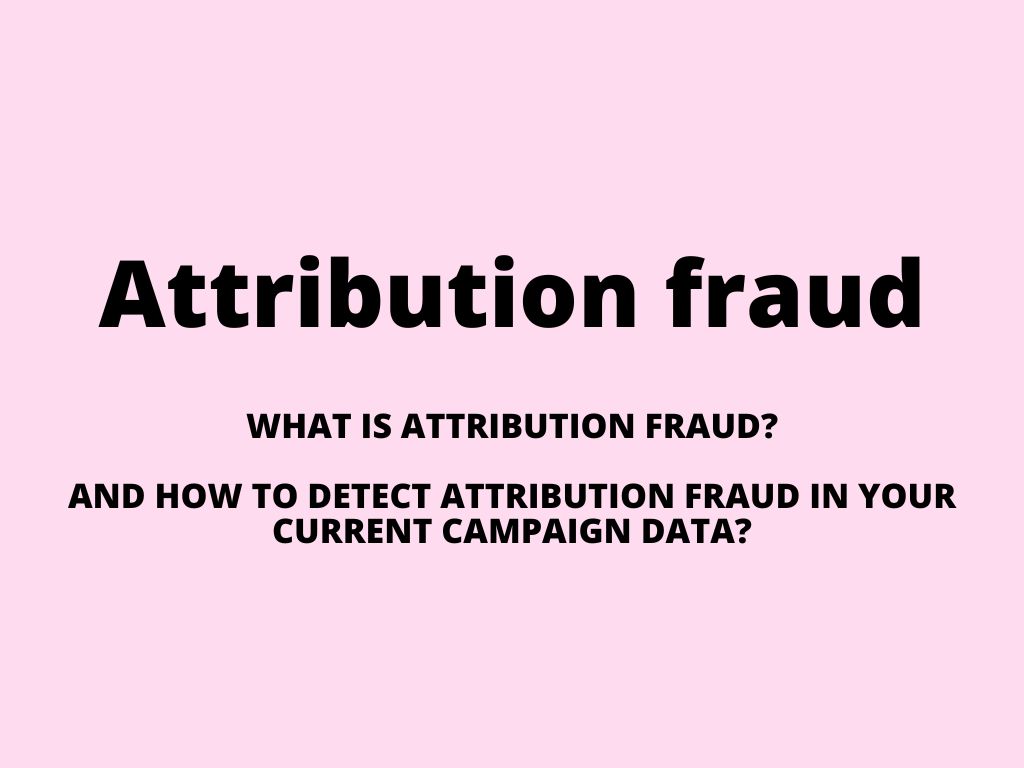
Attribution fraud – what is it and how to detect attribution fraud in your campaign data?
Have you ever wondered how some mobile apps seem to magically get credited with installs they didn’t earn? It’s called “attribution fraud”.
What is attribution fraud?
Imagine you just installed a cool new app. You found it on your own or maybe through a friend’s recommendation. Now, someone shady wants to swoop in and take credit for your discovery. Attribution fraud is their sneaky way of doing it.
Attribution fraud stands out from other app install fraud schemes due to a crucial distinction, making it a trickier challenge to uncover.
While various fraudulent tactics often involve promoting underperforming apps, attribution fraud takes a different approach. It results in paid installs that can, surprisingly, deliver some of the most outstanding performance within your advertising campaign. These installs come from actual, genuine users.
How does attribution fraud work?
Fraudulent vendors rely on malware, which is like a digital spy, quietly hiding on your device. This malware watches what you do and waits for you to install an app. When it detects a new app installation, it goes into action.
Let’s say you installed the app organically or through a legitimate source. The malware doesn’t care; it wants credit. So, it creates a fake report, making it look like you clicked on an ad just before installing the app. This way, it tricks the system into thinking the shady ad was the reason you installed the app.
The fraudsters win, and you might not even realize it. They’ve just stolen credit for your action.
Attribution fraud – paying for what you already own
To illustrate this concept, let me share a brief story. Imagine a skilled chef renowned for his pizzeria, whose pizzeria has become famous thanks to his home-grown organic tomatoes. As the restaurant gains popularity, the chef’s demand for tomatoes increases, prompting him to purchase them from the local market. As the months go by, his own garden starts to produce fewer and fewer tomatoes, even though he continues to spend time and money tending to them.
The tomatoes he’s purchasing from the market are equally delightful, and his pizzeria remains just as popular. However, he’s overlooking a crucial aspect – he’s being defrauded. The tomatoes he painstakingly cultivated are being illicitly taken from his garden and then peddled back to him by the market vendor. He’s essentially paying for something that is already rightfully his.
This analogy mirrors the issue of app installs attribution fraud. Installs that naturally occur or are generated by other advertising sources are incorrectly attributed.
Fraudulent vendors employ various methods to manipulate the last-click attribution model. Regardless of the tactics used, the outcome remains the same: marketers end up paying for installs they would have acquired anyway. In essence, they’re repurchasing their own tomatoes.
Attribution fraud affects a quarter of all paid app installs
Attribution fraud is a big issue, and it affects a lot of paid app installs. In January 2018, a company called Machine looked at 4.6 million app installs, and they found that 52% of them were fake. This means there were about 3,322 fake app installs every hour.
Most of these fake installs happened because of attribution fraud. In fact, 54% of them were because of attribution fraud. This means there were about 1.3 million fake app installs every month just because of attribution fraud.
These numbers show that attribution fraud is a serious problem. But not many people talk about it. One reason is that knowing these numbers can be scary. And telling clients about it can be even scarier. Some people might think it’s okay because they’re spending their budget and getting good results, even if it’s not real.
Another issue is that it’s very tough to find attribution fraud.
Most fake app installs can be found by looking at how users behave later. But because attribution fraud steals real and often natural installs, we can’t use this method to catch them.
Ways to spot attribution fraud in your current campaign data
Here are three ways to find attribution fraud in your campaign data:
- High click volumes: If a site reports an unusually large number of clicks, it might be a sign of fraud.
- Low click-to-install rate: If the rate of clicks to actual installs is very low for a particular site, it could indicate fraud.
- High conversion rates: If a site consistently performs much better than others, it may be suspicious.
If you notice any of these signs in your campaign data, you might be paying for stolen installs.
Although it can be tough to accept that many of your installs are unnecessary expenses, filtering out attribution fraud has a significant benefit. Your paid installs will decrease, and organic installs will increase, without affecting your results in terms of conversions, in-app performance, or the number of app installs.
In simple terms, you’ll spend less to achieve the same outcomes. This means more budget to invest in installs genuinely generated by your advertising partners and a much better return on investment (ROI), which is the ultimate goal for any app marketer.
Was this article helpful?
Support us to keep up the good work and to provide you even better content. Your donations will be used to help students get access to quality content for free and pay our contributors’ salaries, who work hard to create this website content! Thank you for all your support!
Reaction to comment: Cancel reply